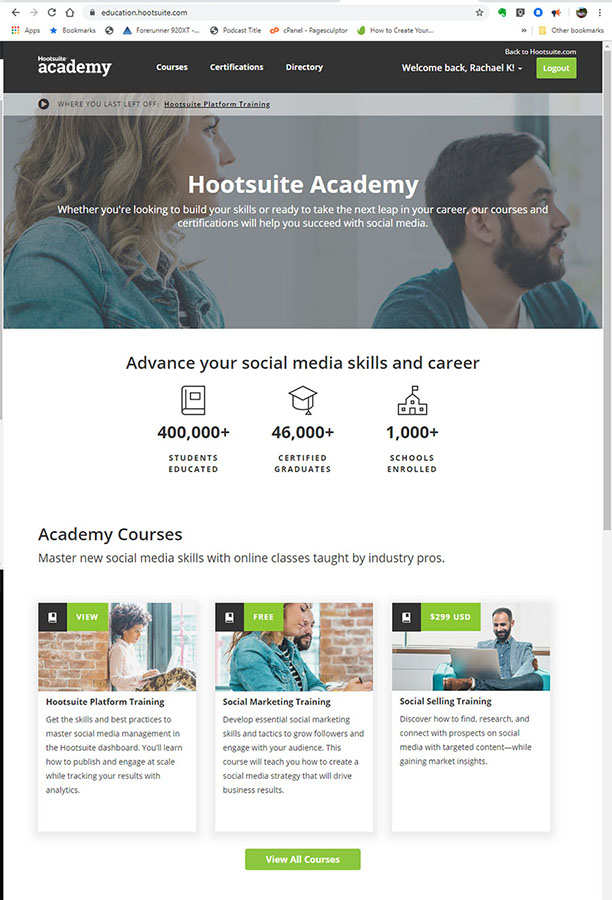
I started writing a social media post about my afternoon sitting through the first lesson series of Hootsuite Academy, two years after I swore I’d never use Hootsuite again. I mean, I have this smartphone with all my social media apps in a neat little folder. And really, how hard is it to post to each account individually?
The number of social media pages we manage has tripled in the last two years with our clients’ campaigns growing more complex. I investigated several options I had used before, but also abandoned. For instance, I love Hubspot as a marketing tool, but found it too involved for a small business like mine. Plus, our newsletters are still infrequent and can easily be handled by Mailchimp. What I really needed was a way to schedule posts efficiently on a visible calendar so I could be sure to cover all the content needed for multiple campaigns.
So with a big sigh, I signed up for Hootsuite’s 30 day trial and connected all our client accounts. One day into the process, I feel relieved as we have multiple posts scheduled for the next few days, minus Instagram since few of our clients have jumped to that social media ship. I’m disappointed Hootsuite is unable to post directly to personal Instagram accounts. I have no problem making my personal account a business account; however, I don’t want to create the mandatory Facebook page required for the validation process. All that just reminds me how much less I’ve liked Instagram since Facebook bought them in 2012.
All afternoon while watching Hootsuite Academy, I’ve thought, “If I hadn’t bailed on this system all those years ago, I would have a better handle on its functions.” And then I think about all the subscriptions I have kept around like Audio Blocks, Adobe Creative Cloud, and even my membership to the Fairbanks Chamber of Commerce. I keep them because they fit the needs of my company now. Back then, my company didn’t need a system like Hootsuite. Now it’s a tool I find extremely beneficial. Overall Hootsuite’s functions haven’t changed much, but the workload of my company has, which means the need for this particular business tool boiled down to timing.
You may be in the same boat. Think about systems you no longer use and the reasons for dropping them. Were they too complex for your daily operations? Too expensive? Not quite what you needed at the time. Look at your company today. Would you use any products or services from those companies now. Just because you said ‘no’ then doesn’t mean you can’t suddenly say ‘yes’. In fact, changing your mind is proof that your company is at a different level and most likely has grown over the years!
